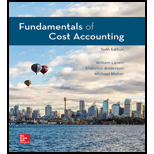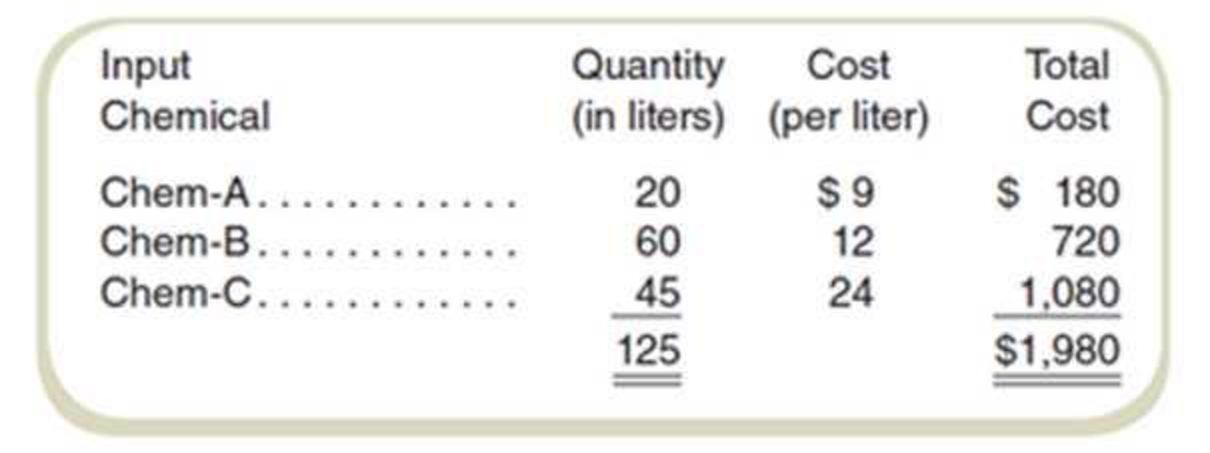
Concept explainers
Materials Mix and Yield Variances
Plano Products manufactures a wide variety of chemical compounds and liquids for industrial uses. The standard mix for producing a single batch of 100 liters of its biggest selling product is as follows:

There is a standard 20 percent loss in liquid volume during processing due to evaporation. The finished liquid is put into 10-liter containers for sale. Thus, the
The actual quantities of direct materials and the cost of the materials placed in production during September were as follows (materials are purchased and used at the same time):

A total of 8,000 containers (80,000 liters) were produced during September.
Required
Calculate the total direct material variance for the liquid product for the month of September and then further analyze the total variance into:
- a. Materials price and efficiency variances.
- b. Materials mix and yield variances.
Want to see the full answer?
Check out a sample textbook solution
Chapter 17 Solutions
Fundamentals of Cost Accounting
 Cornerstones of Cost Management (Cornerstones Ser...AccountingISBN:9781305970663Author:Don R. Hansen, Maryanne M. MowenPublisher:Cengage Learning
Cornerstones of Cost Management (Cornerstones Ser...AccountingISBN:9781305970663Author:Don R. Hansen, Maryanne M. MowenPublisher:Cengage Learning Managerial Accounting: The Cornerstone of Busines...AccountingISBN:9781337115773Author:Maryanne M. Mowen, Don R. Hansen, Dan L. HeitgerPublisher:Cengage Learning
Managerial Accounting: The Cornerstone of Busines...AccountingISBN:9781337115773Author:Maryanne M. Mowen, Don R. Hansen, Dan L. HeitgerPublisher:Cengage Learning

